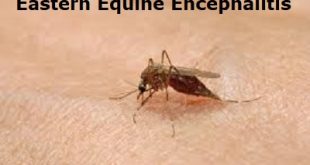Description
Epiglottitis is a potentially life-threatening condition that occurs when the epiglottis – a small cartilage “lid” that covers your windpipe – wells, blocking the flow of air into your lungs. A number of factors can cause the epiglottis to swell – burns from hot liquids, direct injury to your throat and various infections. The most common cause of epiglottitis in children in the past was infection with Haemophilus influenzae type b (Hib), the same bacterium that causes pneumonia, meningitis and infections in the bloodstream. Epiglottitis can occur at any age. Routine Hib vaccination for infants has made epiglottitis rare, but the condition remains a concern. If you suspect that you or someone in your family has epiglottitis, seek emergency help immediately. Prompt treatment can prevent life-threatening complications.
Pathophysiology
Haemophilus influenzae type b (Hib) or Streptococcus pneumoniae (see Etiology) can colonize the pharynges of otherwise healthy children through respiratory transmission from intimate contact. These bacteria may penetrate the mucosal barrier, invading the bloodstream and causing bacteremia and seeding of the epiglottis and surrounding tissues. Bacteremia may also lead to infection of the meninges, skin, lungs, ears, joints, and other structures.
Hib infection of the epiglottis leads to acute onset of inflammatory edema, beginning on the lingual surface of the epiglottis where the submucosa is loosely attached. Swelling significantly reduces the airway aperture. Edema rapidly progresses to involve the aryepiglottic folds, the arytenoids, and the entire supraglottic larynx. The tightly bound epithelium on the vocal cords halts edema spread at this level. Frank airway obstruction, aspiration of oropharyngeal secretions, or distal mucous plugging can cause respiratory arrest.
Noninfectious inflammation of any of the structures around the epiglottis may also result from thermal or chemical injury or from local trauma, including blunt trauma to the neck.
Causes
Epiglottitis can happen for many reasons, including:
- Hib, which is a bacterial infection that can cause epiglottitis, meningitis, and pneumonia.
- Other bacteria, such as Streptococcus pneumoniae (S. pneumoniae), which commonly causes pneumonia, and group A Streptococcus, which causes strep throat.
- Fungi, especially in individuals with a weakened immune system.
- Varicella zoster virus, which causes chickenpox.
- A burn injury after swallowing a very hot drink, or inhaling smoke or steam can cause epiglottis inflammation, as can a blow to the neck.
- Crack cocaine when the inhaled drug’s smoke comes into contact with the epiglottis and surrounding tissues.
These can all cause inflammation, swelling of the epiglottis, and a risk of breathing problems.
Risk factors of Epiglottitis
- Risk factors in children include a lack of immunization or incomplete immunization against Hib, immune deficiency, and airway trauma (physical, chemical, thermal).
- Risk factors in adults include hypertension, diabetes mellitus, substance abuse, immune deficiency, and airway trauma.
Symptoms
The most common signs and symptoms of epiglottitis include:
- Severe sore throat that comes on suddenly
- Fever
- Shortness of breath or difficulty breathing, especially when lying down
- Drooling and difficulty managing saliva in the mouth
- A loud sound heard when breathing in (called stridor)
- Difficulty swallowing
- Muffled voice
- Preference for sitting upright with neck extended and face tilted slightly upward in a “sniffing” position to be able to breathe
Complications of Epiglottitis
Complications of epiglottitis include the following:
- Cellulitis
- Cervical adenitis
- Death
- Empyema
- Epiglottic abscess
- Meningitis
- Pneumonia
- Pulmonary edema
- Respiratory failure
- Septic shock
- Hypoxia
- Prolonged ventilation
- Tracheostomy
- Death
How is epiglottitis diagnosed?
Tests done to diagnose epiglottitis include the following.
- A laryngoscopy, using a small camera at the end of a flexible tube, is done to examine the throat.
- A swab of the throat is taken to test for bacteria or viruses.
- Blood tests check the white blood cell count (a high count means the immune system is fighting an infection), and to find any bacteria or viruses in the blood.
- An X-ray or CT (computed tomography) scan may be used to determine the level of swelling, and to see if there is a foreign object in the airway.
Since epiglottitis and croup share a number of common symptoms, it is important that testing pinpoint the illness correctly so that the proper treatment may be given. Unlike croup, which appears mainly during the winter months, epiglottitis is no more common during one part of the year than another.
Epiglottitis treatment
Patients with signs of an advancing upper airway obstruction, consistent with an acute epiglottitis, should be treated as a medical and an airway emergency. In the presence of respiratory distress, diagnostic procedures and radiography are not indicated, and securing the airway should be prioritized.
Treatment of epiglottitis involves first making sure you or your child can breathe, and then treating any identified infection.
Helping you breathe
The first priority in treating epiglottitis is ensuring that you or your child is receiving enough air. This may mean:
- Wearing a mask. The mask delivers oxygen to the lungs.
- Having a breathing tube placed into the windpipe through the nose or mouth (tracheal intubation). The tube must remain in place until the swelling in your or your child’s throat has decreased — sometimes for several days.
- Inserting a needle into the trachea (needle tracheostomy). In extreme cases or if more conservative measures fail, the doctor may need to create an emergency airway by inserting a needle directly into an area of cartilage in your or your child’s trachea. This procedure allows air into your lungs while bypassing the larynx.
Treating infection
If your epiglottitis is related to an infection, intravenous antibiotics will be given once you or your child is getting enough air.
- Broad-spectrum antibiotic. Because of the need for quick treatment, rather than wait for the results of the blood and tissue cultures, you or your child is likely to be treated with a broad-spectrum drug.
- More-targeted antibiotic. The drug may be changed later, depending on what’s causing the epiglottitis.
Prevention of Epiglottitis
Hib vaccine
Immunization with the Hib vaccine is an effective way to prevent epiglottitis caused by Hib. In the United States, children usually receive the vaccine in three or four doses:
- At 2 months
- At 4 months
- At 6 months if your child is being given the four-dose vaccine
- At 12 to 15 months
The Hib vaccine is generally not given to children older than age 5 or to adults because they’re less likely to develop Hib infection. But the Centers for Disease Control and Prevention recommends the vaccine for older children and adults whose immune systems have been weakened by:
- Sickle cell disease
- HIV/AIDS
- Spleen removal
- Chemotherapy
- Medications to prevent rejection of organ or bone marrow transplants
 Diseases Treatments Dictionary This is complete solution to read all diseases treatments Which covers Prevention, Causes, Symptoms, Medical Terms, Drugs, Prescription, Natural Remedies with cures and Treatments. Most of the common diseases were listed in names, split with categories.
Diseases Treatments Dictionary This is complete solution to read all diseases treatments Which covers Prevention, Causes, Symptoms, Medical Terms, Drugs, Prescription, Natural Remedies with cures and Treatments. Most of the common diseases were listed in names, split with categories.







